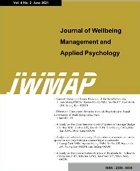 E-ISSN : 2586-6036
E-ISSN : 2586-6036
Abstract
Purpose: This study was conducted to investigate the effects of change in the unstable support surface location during bridge exercise on the muscle activity of erector spinae and gluteus maximus. Research design, data and methodology: 12 healthy participants aged 23.32 ±1.02 were measured muscle activities of erector spinae and gluteus maximus during bridge exercise and compared between the exercise conditions; unstable support surface located on upper back and feet during bridge exercise. Paired t-test was performed to identify whether there was a significant difference in the muscle activities between the exercise conditions. Results: As a result, even though higher levels of the averaged muscle activities of both erector spinae and gluteus maximus during exercise in unstable support surface located on feet than upper back were observed, no significant differences were found. Conclusions: The change of unstable support surface location during bridge exercise for low back pain rehabilitation would be more appropriate to be used to increase levels of tension of muscle activities and train fine motor control rather than to strengthening muscle strength.
- keywords
- Bride exercise, Core muscles, Human-care service, Motor control, Muscle activity
- Downloaded
- Viewed
- 0KCI Citations
- 0WOS Citations













